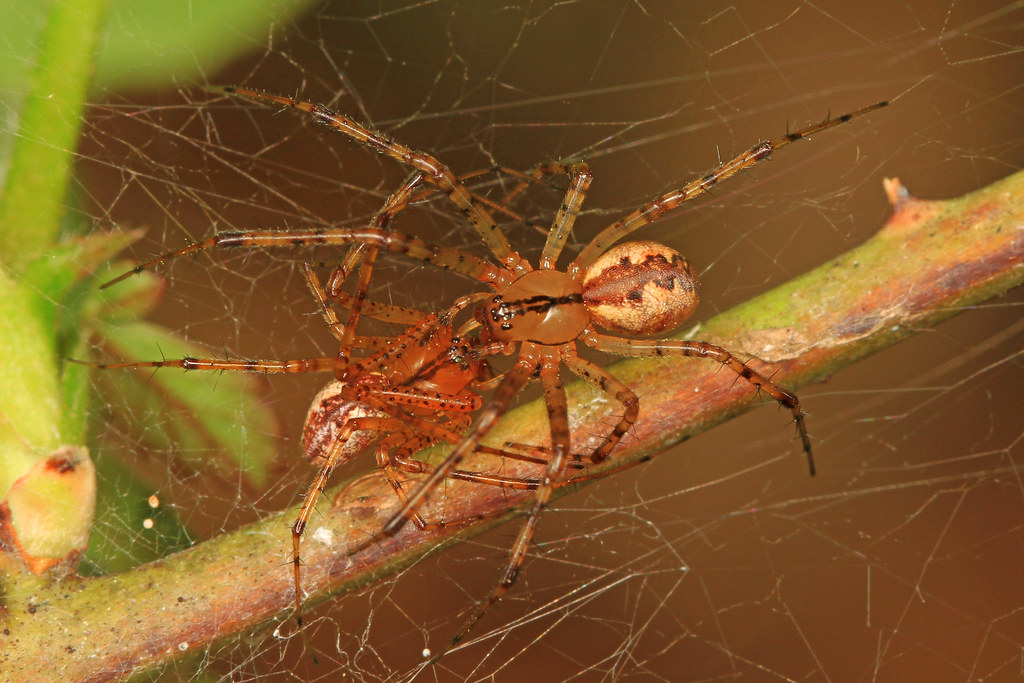The pictures we use in our articles might not show exactly what the words say. We choose these pictures to make you interested in reading more. The pictures work together with the words but don’t take their place. The words still tell you the important facts.
Hammock spiders, also known as sheet weavers, are a fascinating group of arachnids that have captivated the attention of both scientists and nature enthusiasts alike. These small but remarkable creatures belong to the family Linyphiidae and are renowned for their unique web-building techniques. In this article, we'll delve into the intriguing world of hammock spiders, exploring their characteristics, behaviors, and ecological significance.
As we unravel the mysteries of these tiny architects, you'll discover why hammock spiders are more than just ordinary arachnids. From their innovative web designs to their impact on local ecosystems, these spiders play a crucial role in the delicate balance of nature. Join us on this journey to learn more about these remarkable creatures and gain a deeper appreciation for the wonders of the natural world.
Key Takeaways About Hammock Spiders
- Hammock spiders construct horizontal sheet-like webs with a unique design
- They are small in size, ranging from 2-10 mm in body length
- These spiders exhibit aggressive behavior towards other spiders
- Hammock spiders can reach high population densities in certain areas
- They have a significant ecological impact on local insect and spider populations
7 Fascinating Facts About Hammock Spiders
1. Web-Weaving Wizards
Hammock spiders are true masters of web construction. Their signature horizontal sheet-like webs are a marvel of engineering in the arachnid world. These webs are not just simple constructions but complex structures designed for both shelter and prey capture.
The web is typically held in place by scaffolding threads, creating a sturdy and efficient trap for unsuspecting insects. This unique design sets hammock spiders apart from other web-building spiders and showcases their evolutionary adaptations.
2. Upside-Down Hunters
One of the most intriguing facts about hammock spiders is their hunting technique. These spiders have adapted to hang upside-down near the center of their sheet-like web, patiently waiting for prey to land on the silken platform.
This inverted position allows the spider to quickly detect any vibrations on the web caused by potential prey. Once an insect lands on the web, the hammock spider can swiftly move to capture its meal, demonstrating the effectiveness of their hunting strategy.
3. Size Matters Not
Despite their impressive web-building skills, hammock spiders are relatively small in size. Most species have body lengths ranging from 2 to 10 mm, making them one of the smaller groups of spiders.
However, their small size doesn't diminish their impact on the ecosystem. In fact, it may contribute to their success, allowing them to thrive in various habitats and reach high population densities in some areas.
4. Habitat Diversity
Hammock spiders are highly adaptable creatures, capable of thriving in a wide range of environments. They can be found in various habitats, including:
- Shaded areas in forests
- Dense vegetation in grasslands
- Urban green spaces
- Against structures like hollow logs or piles of branches
This adaptability allows hammock spiders to colonize diverse ecosystems and play important roles in different food webs.
5. Aggressive Behavior
Despite their small size, hammock spiders exhibit surprisingly aggressive behavior, particularly towards other spiders. This aggression often manifests in the form of web "takeovers," where a hammock spider may attempt to usurp the web of another spider.
This competitive behavior is not limited to other species but extends to conspecifics (members of the same species) and congenerics (members of the same genus). Such aggression may contribute to their success in establishing and maintaining territories.
6. Ecological Impact
The presence of hammock spiders can have significant ecological consequences, especially in areas where they reach high population densities. In some regions, such as parts of Acadia National Park in Maine, hammock spider populations can reach up to 12 individuals per square meter.
This high density can lead to:
- Reduced insect prey availability for native spider species
- Potential displacement of native sheet-line weavers and other spiders
- Alterations in local food web dynamics
Understanding these ecological impacts is crucial for conservation efforts and maintaining biodiversity in affected areas.
7. Global Distribution
While some hammock spider species have limited geographical ranges, others are more widely distributed. For example, the genus Pityohyphantes, which includes several hammock spider species, is found across Europe and Eastern Europe.
Some species, like Pityohyphantes phrygianus, have an even broader distribution, spanning from Europe to Russia, Kazakhstan, and even Japan. This wide distribution highlights the adaptability and success of hammock spiders in various climates and ecosystems.
Diagram illustrates the lifecycle of a hammock spider, from egg to adult, including key behaviors like web building, hunting, and territorial actions.
Hammock Spider FAQ
Are hammock spiders dangerous to humans?
No, hammock spiders are not considered dangerous to humans. They are small and their venom is not harmful to people.
How do hammock spiders differ from other web-building spiders?
Hammock spiders create horizontal sheet-like webs, unlike the vertical orb webs of many other spider species.
Can hammock spiders be beneficial to gardens?
Yes, hammock spiders can help control insect populations in gardens, acting as natural pest control.
How long do hammock spiders typically live?
The lifespan of hammock spiders varies by species but generally ranges from several months to a year.
Are hammock spiders considered invasive in some areas?
Some hammock spider species, like Linyphia triangularis, can become invasive in certain regions, potentially impacting local ecosystems.
Conclusion: The Intricate World of Hammock Spiders
As we've explored in this article, hammock spiders are fascinating creatures that play a significant role in various ecosystems. Their unique web-building techniques, adaptability to different habitats, and complex behaviors make them a subject of great interest for both scientists and nature enthusiasts.
While their small size might make them easy to overlook, the impact of hammock spiders on their environments can be substantial. As we continue to study these remarkable arachnids, we gain valuable insights into the intricate balance of nature and the importance of even the smallest creatures in maintaining biodiversity. The next time you come across a delicate sheet-like web in a shaded area, take a moment to appreciate the tiny but mighty hammock spider that crafted it.
This Mermaid diagram illustrates the lifecycle of a hammock spider, from egg to adult, including key behaviors like web building, hunting, and territorial actions. It provides a visual representation of the information discussed in the article, enhancing the reader's understanding of hammock spider biology.






